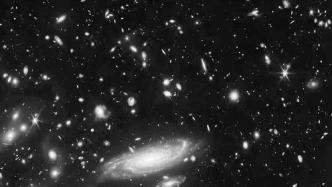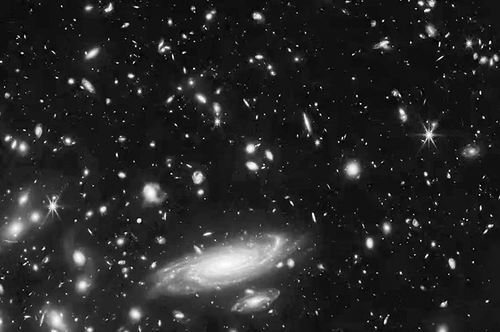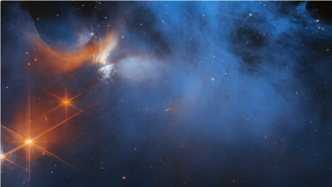

The James Webb Space Telescope has discovered a crowded field of galaxies. Image credit: ESA, NASA
One day in 2022, an international astronomy team led by Erica Nelson, an assistant professor of astrophysics at the University of Colorado Boulder, analyzed data from the Cosmic Evolution Early Release Science Survey (CEERS) sent back by NASA's James Webb Space Telescope. .
The data comes from a space near the Big Dipper. Back in the 1990s, the Hubble Space Telescope made observations of this seemingly dull stretch of deep space, but found nothing special.
And when Nelson looked at an image of the same space taken by the Webb Space Telescope, she spotted six strange fuzzy points of light.
"They were so red and bright and unreal," recalls Nelson. In astronomy, red light is usually equal to ancient light, which has been expanding since the birth of the universe. The farther a celestial body is from the earth, the redder it will appear in the instrument, and vice versa.
The research team immediately calculated these fuzzy galaxies and found that they are huge, with tens or even hundreds of billions of stars the size of the sun, and the mass is comparable to that of the Milky Way.
The researchers speculate that the six potential galaxies formed between 500 million and 700 million years after the Big Bang, or 13 billion years ago. Related research was published in Nature on February 22.
"It's mind-boggling," Nelson said. "We never thought the early universe could get organized so quickly. The current framework of cosmology cannot explain how these galaxies formed so quickly."
In fact, this isn't the first time scientists have spotted galaxies that formed in the early universe in images from the Webb Space Telescope. Last year, other scientific teams discovered four galaxies that may have coalesced from gas about 350 million years after the Big Bang. However, the previous four galaxies pale in comparison to the six newly discovered galaxies, because the former are too small in mass and contain far fewer stars than the latter.
The researchers pointed out that more data are needed to confirm that the six galaxies are actually as massive as predicted and date back to the early universe. Because calculations show that there wasn't enough material to make up planets at the time to form so many stars at such a fast rate.
"If one of these galaxies is confirmed to be true, it will break our understanding of cosmology." Nelson said, "If it is not a galaxy, then these six celestial bodies may be some strange 'things', such as Faint quasar."
"It takes a long time for light to travel from a galaxy to Earth, and when you look at the light from these objects, you're looking back in time," Nelson said, which is exactly what she wanted to do.
(Original title ""Webb" discovered 6 ancient large galaxies that "should not exist" may overturn the existing universe model")
Related paper information:
https://doi.org/10.1038/s41586-023-05786-2
